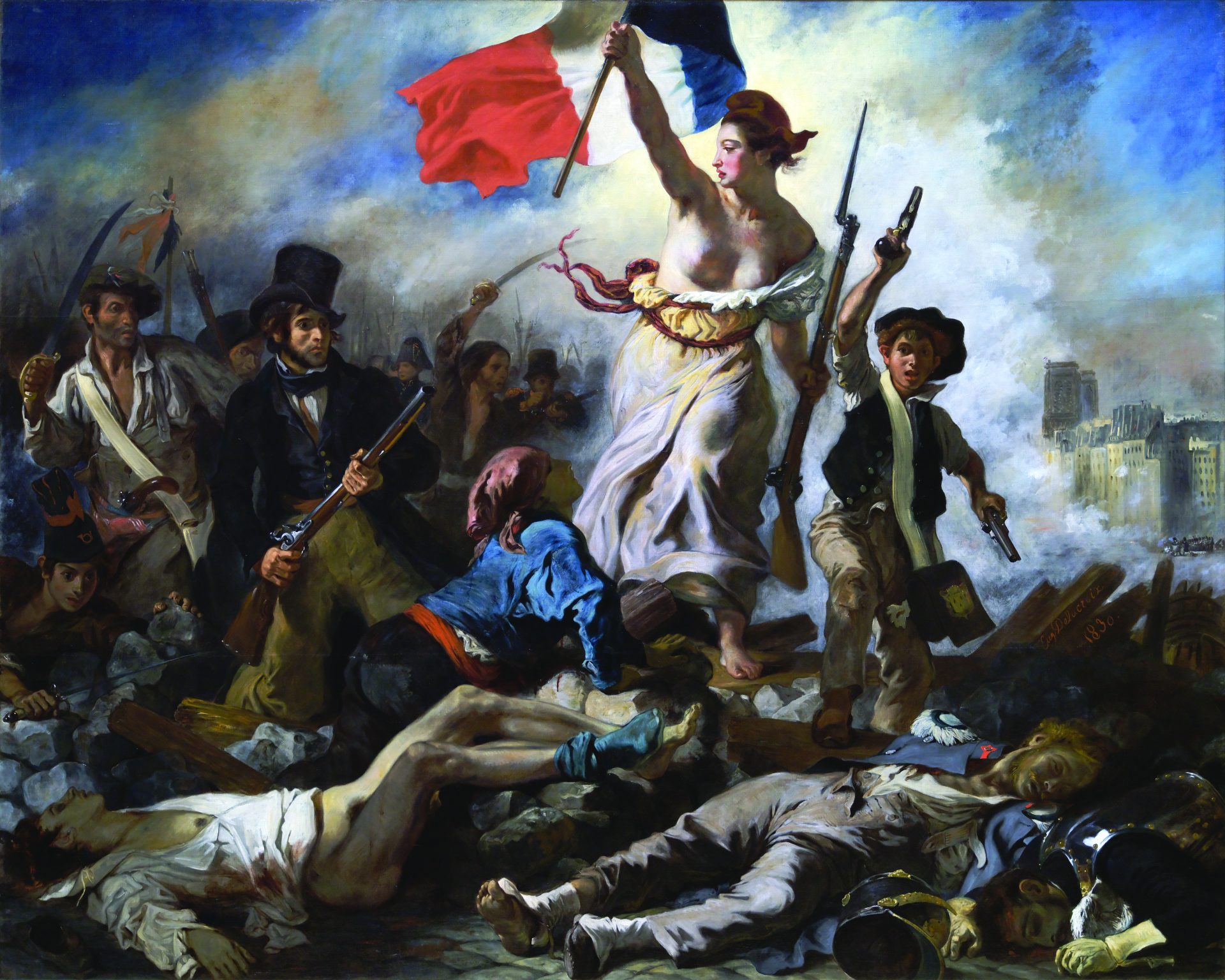
Terrible things happen in Kristen Roupenian’s You Know You Want This, a fact hinted at by the table of contents, which reads like a list of YA vampire novels: “Bad Boy,” “Death Wish,” “Scarred,” “Biter.” “I write horror stories,” the author told the Sunday Times last year. “The pull and push of revulsion and attraction is what the book revolves around.”
Roupenian is fascinated by the way power—in her stories, often bestowed by sex or magic—seesaws between people, temporarily elevating the lowly only to drop them back in the dirt where they belong. Her victims can sometimes gain enough leverage to become villains, but since they’re propelled by petty angers and relentless self-absorption, not even having the upper hand removes the taint of abjection. For Roupenian, human nature’s inherent ugliness is like gravity: briefly defiable yet inescapable. There are no heroes in this collection because there is no dignity. I think it is fair to call it a book “for our times.”

The opener, “Bad Boy,” is emblematic of what’s to come. A genderless couple is frustrated with their sad-sack friend, who keeps bumbling his way into bad relationships. Listening to him detail his latest breakup is “like listening to an alcoholic whine about being hungover.” But there’s something endearing about his spinelessness; he’s “like a sad little dog hungry for friendliness and praise.” The couple, it becomes clear, is like a different type of dog, one thirsty for blood. “We allowed ourselves to be irritable with him, to pick on him a bit,” they admit after the friend has become a more or less permanent houseguest. Passivity, especially when seasoned with self-pity, invites abuse, and the couple answers the call with escalating malice that culminates in a scene of extreme violence.
Most readers will probably identify with the couple before they become so monstrous. (If you’ve never met an infuriating milquetoast who can’t act in his own self-interest, the milquetoast may be you.) But who are these people who give their sadism such unusually free rein? We know something of their self-analysis (“We were chasing something inside of him that revolted us, but we were driven mad as dogs by the scent”), but little else. No one is given a proper name (which is also true of “Scarred” and “The Mirror, the Bucket, and the Old Thigh Bone”) or placed in an identifiable location, year, or even a distinct body. There’s no hint of the outside world: no news, no politics, no jobs, no families. I associate those omissions with fairy tales more than horror stories, and given the former’s embrace of the macabre (the sliced-off toes, the eaten children, the sawed-out hearts), maybe “fabulist” more accurately identifies Roupenian’s style.
Roupenian traverses blatantly fantastical territory in “The Mirror, the Bucket, and the Old Thigh Bone,” a story about a disconsolate princess accused of being “selfish and arrogant and spoiled” for failing to fall in love with a suitor. The only creature that beguiles her is an object made up of the title items: an upright thigh bone upon which a mirror and bucket are fastened and then covered by a black cloak, which somehow makes it pass as human. “You were looking at your own face reflected in this cracked mirror,” a royal adviser tells the princess after she’s mistaken a passionate night with the bucket—“kissing and joking and talking until dawn”—for the start of a relationship with a mysterious man. (There but for the grace of god go I.) She acquiesces to marriage with an actual man who loves her and wants her to be happy, but his attempts to integrate the trash contraption into their relationship backfire, badly. This could be a parable about how women are pushed to prioritize mates and family over pursuing a love affair with themselves, or about the delusions one indulges in when desperate for connection, or about how we can be selfish even when we think we’re acting out of selfless love. It may be a cautionary tale about polyamory, or it may be a tale with no agenda at all. The story is autological: It can mirror back whatever a reader might want to find.
The career-making “Cat Person,” too, is something of a mirror-and-bucket-and-thigh-bone creation. When it appeared in the New Yorker in 2017, it launched a slew of response articles and thousands of tweets at least in part because the story was easily received as validating the mood of the moment. Thanks to the #MeToo media frenzy, we were all primed to see a canny (or, at any rate, timely) commentary on sexual exploitation. (The story was the second-most-read New Yorker item that year, beaten by an article comprising first-person accounts from alleged victims of Harvey Weinstein.) “Cat Person” concerns the brief and fractured flirtation turned hookup between Margot, a college student, and Robert, a thirtysomething customer she meets at her movie theater job. Regardless of Robert’s seniority, both characters are immature and awkward. They exchange unremarkable and minorly pathetic obfuscations as they try to impress each other while protecting themselves, revealing little and assuming much. It ends, predictably, in lazy cruelty and disappointment. Their sex is bad, so Margot stops texting Robert after their single date, until she lets a friend speak on her behalf—“Hi im not interested in you stop textng me.” Robert obeys, until he sees Margot at a bar a month later, where she treats him badly, “like a mean girl,” mistaking the “sick and scared” quality of her regret and guilt as proof of an external threat.
While the sex in “Cat Person” was not rape (as fans were quick to aver), it was still rape-y, a term that indicates that one participant wasn’t enthusiastic about the sex before, during, or after. “He didn’t ‘force’ her to do anything,” read one typical article in the Washington Post. “But Robert is older than Margot . . . and therefore has the power.” Most Americans still believe bad sex damages women in a way it simply cannot damage men, so many readers gave Margot a pass for her poor behavior. Robert, on the other hand, became an irredeemable villain when he drunkenly texted Margot the last word of the story: “Whore.” (“There is nothing Margot can do” in response, a different Washington Post writer claimed, ludicrously. The dream of feminism is truly dead if women in 2018 literally have no possible retort while they are safe at home and a man texts them an unimaginative insult.)
Of course the world’s abundance of ambient misogyny lends men a sort of superpower when they denigrate women. But to say that Margot is better than Robert is not only to say very little, but also to miss the point. Here again is the “pull and push of revulsion and attraction.” To believe there is only one force brutally pushing and one blamelessly retreating is to believe a convenient fairy tale. A more valuable interrogation must take into account their collaboration in debasing each other and themselves, their swift abdication of integrity, their small hopes and larger sense of entitlement.
I liked “Cat Person” when it came out, but I found myself resisting You Know You Want This for two reasons. The first is that the back-and-forth dynamic Roupenian finds so fascinating rarely acquires a third dimension. Maybe this is OK; animation can be more entertaining than live action. But the stories’ vagueness ultimately struck me as less a feature than an unintentional bug, like the author wasn’t sure what to invent to fill these gaps and so convinced herself filling them wasn’t necessary. In “Sardines,” a birthday girl is granted her terrible wish for revenge, and the precipitating violation is referred to only as “The Incident.” In “Death Wish,” a girl arrives at her Tinder hookup’s motel with a mysterious suitcase, the contents of which are, pointedly, never revealed. Too many characters—the red-lipstick-wearing Brooklynite of “The Matchbox Sign,” the greedy narrator of “Scarred,” whose predominant characteristic seems to be “sociopath”—are like dolls dropped into a predetermined plot. I found this naked utility wearying rather than intriguing, though it should make for decent TV, where such gaps can be padded with facial expressions and music and sets. (HBO has already optioned the book; I expect a product akin to Black Mirror, flavored more with fantasy than science fiction.)
The second reason is that ugliness, especially sexual ugliness, can be deadening to read about as well as to experience. People behaving badly is an almost irredeemably boring topic these days. (Woe to the horror writer in an age when reality already gives us social and environmental nightmares of biblical proportions.) There is no new insight in simply observing that women and men are pitted against one another even as they attempt intimacy, or that people can be most callous when they should be most sensitive. Almost no one in You Know You Want This attempts to do the “right” thing. Instead, they give license to their basest impulses as a matter of course; kindness is not even a dream.
I agree that everyone sucks, but that’s hardly the last word. Most of us do not compel our irritating friends to murder their overbearing girlfriends. Most of us do not replace our ex-husband’s new girlfriend’s lube with superglue. I’d even venture to bet that most of us have never sincerely called someone a “whore,” at least not to their face (or their phone screen). Roupenian seems to favor a prompt of “what if?” And that certainly yields action. I wish she had sometimes asked why as well.
Charlotte Shane is a cofounder of TigerBee Press and a frequent contributor to Bookforum.






